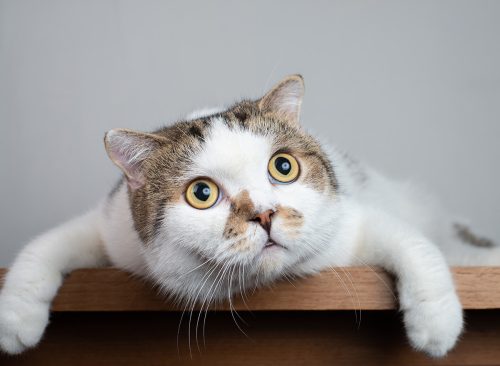Schools Allow Children to Identify as Cats, Horses, Dinosaurs, and Moons
A new trend has students insisting on being recognized as “furries.”

Until the last decade, most children identified as either boys or girls. However, as inclusivity has become a priority in the world, there are now more potential boxes to check off when asked about gender. This week, a news story from the United Kingdom sparked controversy when two students confronted another student who identified as a cat. However, felines are just one of many unique animals that kids are identifying as these days, and the general term “furries” is being used to describe them.

According to The Telegraph, a student in South West identifies as a dinosaur. And at an alternative secondary school in England, another pupil identifies as a horse. And one also identifies as a moon and wears a cape.

Tracy Shaw, Safe Schools Alliance, maintains that the fact kids are identifying as animals is an issue that needs to be dealt with. She also says that teachers shouldn’t be confusing these identifications with gender or gender diversity.

“Teachers should be dealing with this under existing safeguarding frameworks,” Shaw says. “If a child is coming to school identifying as a cat or a horse, that should immediately raise red flags. The teacher should be asking themselves, what are these children looking at online? What forums are they on? What is going on in the home? What is happening in that child’s life and who else is involved?”

“The problem is that teachers have a blind spot where anything involving identity comes in, because they are frightened of doing the wrong thing,” Shaw continued. “They think they are being kind by affirming these behaviors, but they are not being kind, because they are likely to be missing all sorts of things that are going on in that child’s life.”

One anonymous student in Wales told The Telegraph that a classmate who identifies as a cat “feels very discriminated against if you do not refer to them as ‘catself.’” She added: “When they answer questions, they meow rather than answer a question in English. And the teachers are not allowed to get annoyed about this because it’s seen as discriminating.”
The student has been using the catself pronoun for two years, adding that if a teacher tries to get the student to answer in English versus meowing, things go awry.

“It’s affecting other people and their education and everybody in their lessons. It’s distracting to sit in a lesson and have someone meow to a teacher rather than answer in English, especially at secondary school age,” they said.
“That’s going to take a lot out of a lesson because people are going to spend the entire lesson talking about whoever it is over there meowing to the teacher. It’s a big ask to sit there and listen to someone answer like that and not have that be the main talk of the classroom rather than the lesson going on.”

According to the student, social media is to blame for the “furries” as they are influenced by social media counts that started “around Covid” by people who identify as trees and animals.
“When it first started, it didn’t really go out into real life that much. It stayed confined to social media, but then as it got more popular and more people were finding out about it, people then started bringing it into real life situations.”

At another school, a student identifies as “moonself” and wears a cloak to school, “like a Harry Potter wizard cape,” say fellow students. The student claims to be able to put curses on people.
RELATED: Wife Sues Cheating Husband for Age Discrimination, Only to Discover the Other Woman Was Older

“The furry community itself is a complex one, made up of many different identities and definitions of what it means to be a ‘furry,’” the Safer Schools organization tells parents, advising them to “engage in conversation about what they think it means to be a furry and what they see as the benefits.”














